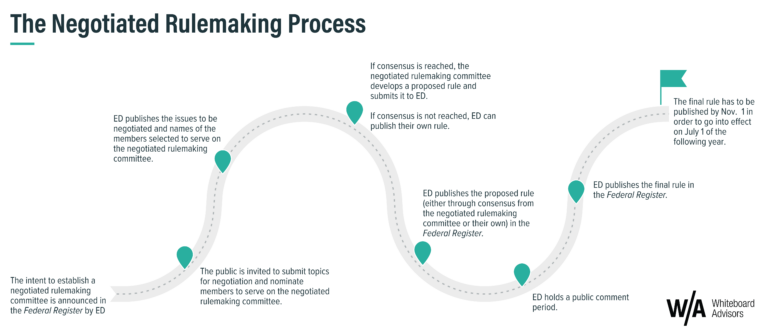EdTech — Solving “Tech” or “Ed” Problems?
My earliest EdTech experience would have been in 3rd or 4th grade, co-authoring “choose your own adventure” stories on my classroom’s single Apple II. Fast-forward to 1993, and you’d find me in a basement lab, banging around on George Landow’s Victorian Web, an early “hypertext” supporting his Victorian Literature classes.
I later took and then TA’d Brown’s Educational Software Seminar, building HyperCard and HTML apps for local Providence teachers. I liked the work, so went on to integrate technology at a couple of private schools, build online tools for teachers at Scholastic, and launch mobile reading assessment tools at Wireless Generation. EdTech!
This year, inspired in part by a Benedict Evans post, I’ve been reflecting on the problems I’ve worked on, the questions that mattered. Were they “Tech” questions? “Ed” questions? Something else?
Mobile reading assessment
In the early days at Wireless Generation, we solved two big technology problems. The first was real-time capture of authentic reading performance in grades K-3. We leveraged the emerging Palm Pilot and solved problems of interface design, capture techniques, and scoring. The second was synchronizing, managing, and sharing the captured data in a world before ubiquitous internet.
Once those two problems were solved, or at least on the path, we wound up spending most of our time on problems of instruction and operations. “How could a teacher plan instruction based on this performance profile in his classroom?” Or “for a school with that percentage of ‘at-risk’ students, how could the principal plan training and intervention and then monitor progress?”
The (collective) work was people work — training, nudges, rhythms. We measured success in both practice change and student achievement, doing our part in larger initiatives to improve literacy outcomes.
Data systems
The late 2000s saw a data systems arms race. Big districts and states started deploying “instructional improvement systems.” Big data was going to set educators on the path to precise, targeted, personalized instruction, in a framework of “performance management.”
The industry tackled hard technology problems, mostly around integrating and reporting huge, diverse, and inchoate data sets. We delivered unified views at the classroom and student level, for teachers and for parents.
Solving these technology problems did not translate so directly to education problems. “Dashboards” lacked both interpretative nuance and links to instruction. The system wasn’t ready for “performance management” — and may never be.
In the 2010s, data systems work increasingly focused on operational problems that mattered to districts. Climate surveys, EL compliance, teacher evaluations, attendance, equity, scheduling, and a dozen other “enterprise” issues. New software systems provide insights and tools to support operational change — including training, nudges, and rhythms. They depend on deep domain expertise and work well when they’re part of a larger school or district initiative.
Instruction
To me, EdTech in the 2010s was most of all about instruction. Online intervention programs. Core curriculum with integrated assessment. Sims, games, and video bringing new worlds into the classroom. Apps of all kinds.
Especially in the younger grades, technology proved its potential teaching component skills — early phonics, math fluency — to individual students. Apps flourished, though the technological innovation was rarely paired with the nudges and rhythms that change practice, resulting in generally low implementation fidelity.
In the core market, the winning model emerged as “hybrid” — using technology to solve problems of assessment, simulation, engagement, and collaboration, but providing print backups and non-technological paths in each of these areas. The reasons include idiosyncrasies of the selection process, concerns around equity of access, differences in teacher readiness, and the gap between deployed technology and teachers’ experiences of it.
Fundamentally, a core program is a solution set of operational rhythms and lesson content instantiating a particular instructional ideology. Competition in the market starts with ideology and rhythms — education problems first and foremost.
Yet there are meaningful technology problems to solve and rich work already underway. I don’t think the starting point is “personalized learning” — a solitary path through a maze of facts and skills. Instead, it’s project work, collaboration, simulation, and creation — the connective and generative applications of technology.
Looking back
Twenty years ago, the mere presence of devices and use of software in the classroom felt like progress to me. Use of the technology was a goal and an end in itself.
Fifteen years ago, teachers collecting, believing, and acting on their own students’ data felt like progress to me. Technology as an instructional productivity tool.
Ten years ago, progress felt like schools and school systems using data operationally, changing practice via insights and informed decision-making. Technology enabling the enterprise.
Five years ago, progress felt like breakthroughs in the student experience — simulations, collaborations, specific component skills. Technology at the point of student learning.
Progress was consistently education work enabled by technology, not technology work applied to education. I think it’s an important distinction. The EdTech failures — we have had our share — tended to lead with technology and lag on domain expertise.
Looking forward
There is plenty of important work in the years ahead of us. “Software is eating the world,” and for the most part has made our lives richer and more productive. It’s still just nibbling at K-12.
To me, interesting areas of work include:
- Instructional program design with teacher materials that can be varied in their “resolution” — highly detailed step-by-step guides for teachers new to the practice or a specific topic; fully built-out “study lessons,” and outlines and cues for experienced teachers who are fluent in the topic. The core programs with the most promise of instructional change are often the hardest to use, because they try to script every step instead of allowing for a continuum of teacher readiness.
- Related: I’ve become interested in the practice of Lesson Study, including kyouzai kenkyuu — the study of teaching materials as part of instructional planning. Good problem-based math instruction requires a teacher to be fluent, fluid, and flexible — thinking on her feet while supporting “productive struggle.” These skills can’t be scripted, nor absorbed in four days of sit-and-get training in August.
- “New Productivity” apps for teachers and teaching. Instead of the “enterprise” lens — e.g. interim assessments — instead solve for teachers’ personal productivity. There are real go-to-market and data privacy challenges with these apps, but improving the work of 3.7M professionals seems important and worthwhile. I’ve seem some cool grading solutions, but there’s plenty of room to innovate.
- Assessment approaches that drive instructional conversations beyond memorizing content and chasing individual standards. For example, simulation-based assessments, portfolios, or executive function. There are significant go-to-market challenges here too — it’s not easy to sell system refocus or redesign — but it’s important work.
- A “platform” approach to interoperability. We don’t have an equivalent to Salesforce in K-12 — a platform that integrates and operationalizes data — nor do we have a set of tools and methods for creating “application networks” (e.g. MuleSoft). Interoperability standards and initiatives are part of the solution but not the whole story.
These are not all business ideas, and even the business ideas are not all good ones. K-12 is a hard market!
I continue to be most interested in:
- School design that integrates content/skills and projects/collaboration, informed by modern understanding of adolescence, designed and delivered by excellent, creative, and loving teachers, enabled by innovative scheduling and use of space. You can bring technology to bear along the way, but I think the starting point is “what and how” — solving education problems.
- Executive Function for adolescents, as a curriculum, toolset, set of habits, communication patterns, and community of practice. Consumer technology has eroded our attention and reduced our planfulness — we owe our children the chance to build and live their best lives.
I’ve enjoyed the chance to spend this year as an EIR at Whiteboard Advisors. I’m not yet all-in on anything, in part because the projects I’m most interested in feel like slow burns more than rocketships. More to come.
I’d love to talk with you about these ideas or others, and look forward to staying in touch in 2020!
Happy New Year,
-Dave




